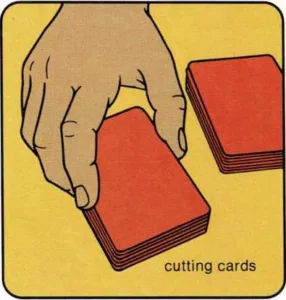Card Games
ABC’s of Card Playing
Card games are lots of fun. But to play, you have to know the names of
the cards and the value of each one. There are also special words and
rules to learn.
A deck or pack has 52 cards made up of four suits. The
suits—spades, hearts, diamonds, and clubs—are shown by markings
on the cards. There are 13 cards in each suit. From lowest to highest,
these usually are: ace, 2, 3, 4, 5, 6, 7, 8, 9, 10, jack, queen, and
king. The ace, however, is a special card. It can be low, high, or both,
depending on the game you’re playing.
To begin a game with two or more players, you must find out who goes
first or who deals the cards. Spread the cards out, facedown. Each
player takes one card. The player with the highest card goes first or is
the dealer.
The dealer hands out the cards to the other players. Before play
begins, the dealer shuffles, or mixes, the cards.
The cards are then cut by the player on the dealer’s right. He takes
five or more cards from the top of the deck and puts them on the bottom.
The deal is the handing out of the cards. Usually, the cards are
dealt one at a time. The dealer gives the first card to the player on
his left, and so on around the group until all players have the number
of cards they need.
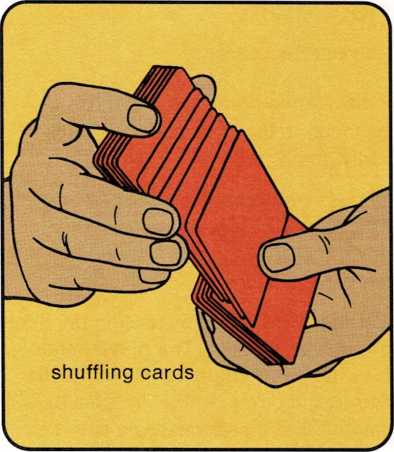
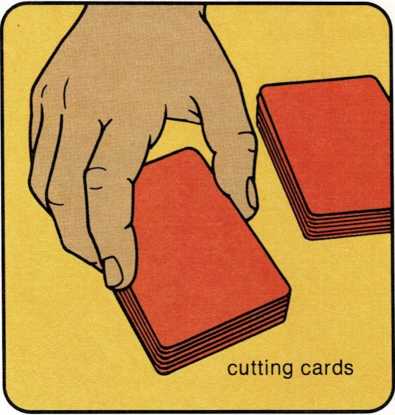
The stock consists of a pile of any cards left over after a deal.
Players take cards from the stock according to the rules of the game
being played.
A pair is two cards having the same value, such as two 4’s.
Three or four of a kind is three or four cards having the same
value, such as three 9’s or four jacks.
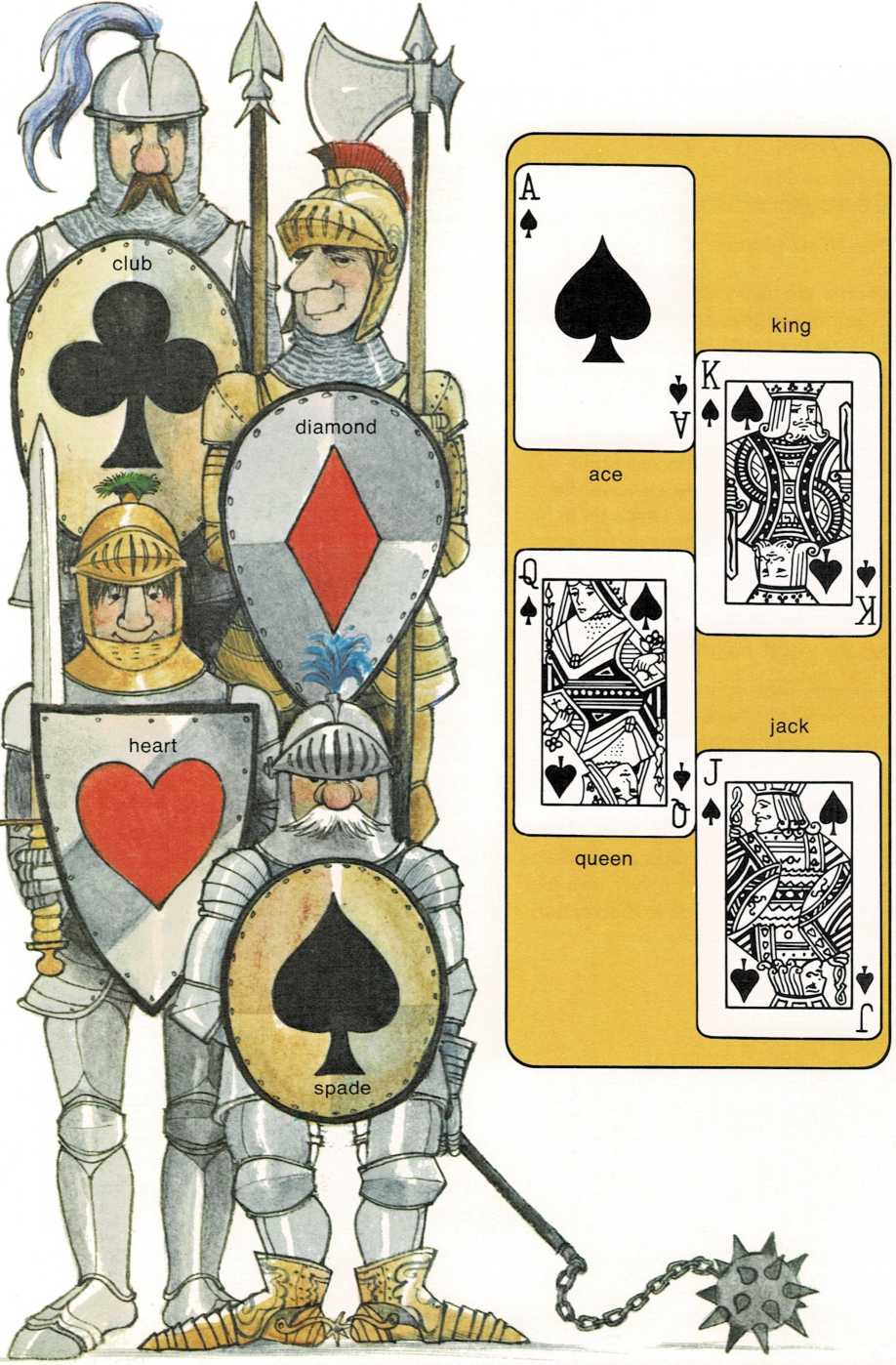
Concentration
(two to six players)
Shuffle the cards and spread them facedown on the table. You may arrange
the cards in rows, but it’s more fun to just scatter them around any old
way.
Each player, in turn, turns up any two cards, one at a time, so everyone
can see them. If the cards have the same value, the player keeps them
and draws two more. As long as he draws pairs, he continues to play.
When he draws two cards that don’t match, the player puts them back,
facedown, exactly where he got them.
Everyone then concentrates and tries to remember where these cards are.
The skill is in remembering where to find matching cards when it is your
turn. This is why the game is called concentration.
The game continues until all the cards have been paired. The player who
has the most pairs of cards is the winner.
I Doubt It
(three to five players)
Deal all the cards. Some players may get more cards than others. This
does not matter. The player to the left of the dealer starts. He puts
one, two, three, or four cards facedown on the table. He then says they
are all aces, the high card. What he says may or may not be true.
Any one of the other players may say, “I doubt it,” and look at the
cards. If the first player was bluffing, he loses and must take back his
cards.
The next player, in turn, puts down one to four cards and says they are
kings. If nobody doubts it, the cards stay facedown on the table. From
then on, any player who loses must pick up all cards on the table.
Players, in turn, name the card of the next highest value—queens,
jacks, tens, all the way down to twos. Then they start again with aces.
The player who gets rid of all his cards is the winner.
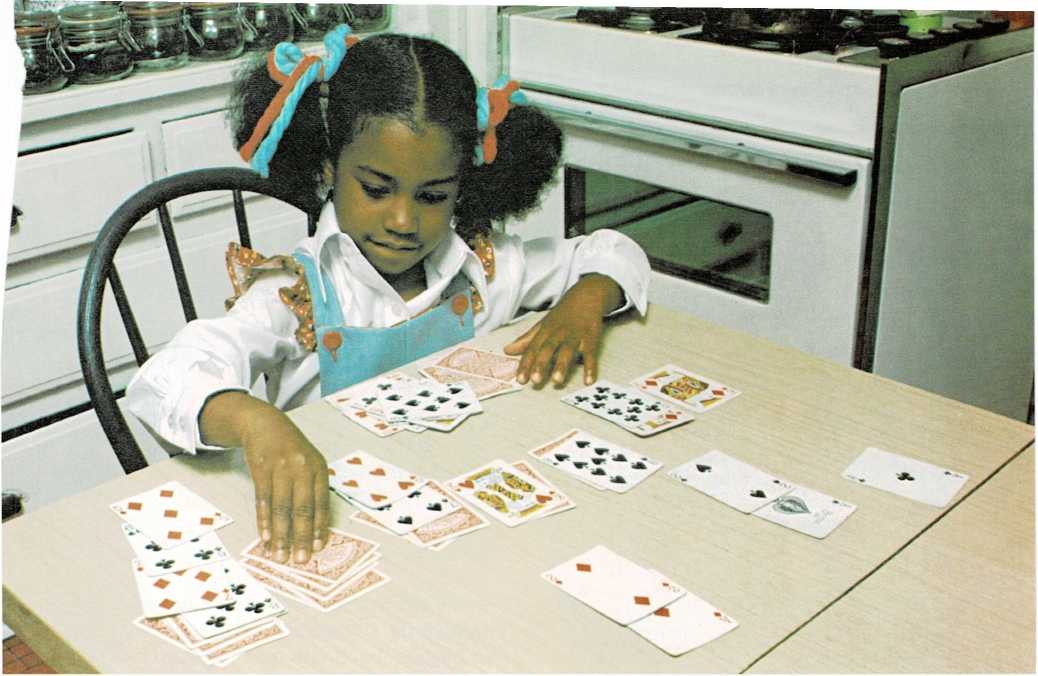
Klondike
(one player)
This is a game of solitaire, which means you play it alone. Shuffle a
deck of cards. Then, deal out seven cards in a row. The first card
should be faceup, the other six facedown. Next, deal out six more cards
on top of the row of facedown cards. Again, the first card should be
faceup. Continue doing this until you have seven cards in the last pile.
The bottom card in each pile should be faceup.
Keep the rest of the cards facedown, to be used as stock (see stock,
page 286). If there are any aces among the faceup cards, put them above
your layout, faceup. Every time you take a faceup card from a pile, you
turn over the next card in that pile. The ace has a value of 1. You
build cards of the same suit on the ace, starting with the 2 and
continuing up to the king.
The faceup card or cards are now moved from pile to pile. When you move
a faceup card or cards to another pile, it must be put on top of a
higher card of a different color. For example, you put a red 9 on a
black 10.
If you remove an entire pile, you can put a king in the empty space and
start building down from it.
The leftover cards, or stock, are turned over, one by one. Those that
can be used are added to the piles. Aces are placed above the layout,
where they are built on. The unused cards are turned over again and
again, until they are all used up, or until there are no more possible
plays. You win when you have built up to the king on all the aces.

(two to five players)
Go Fish
If there are two players, each one gets seven cards. If there are more
than two players, each one gets five cards. The leftover cards are
placed in the middle of the table for “fishing.”
The player to the left of the dealer goes first. He asks any player for
cards that will match the value of a card or cards he has in his hand.
For example, if he has one or more aces, he asks, “Do you have any
aces?” The player who was asked must give up any aces he has. As long as
the first player gets what he asked for, he continues to play. When he
gets four of a kind, he puts these cards down in front of him.
When a player is asked for a card he does not have, he says, “Go fish.”
The first player then picks up the top card from the pile in the middle
of the table. If this gives him four of a kind, he puts these cards down
in front of him. If not, he adds the card to his hand. In either case,
this completes his turn.
The player to the left goes next. The game goes on till a player matches
all his cards and has none left in his hand. This player is the winner.

